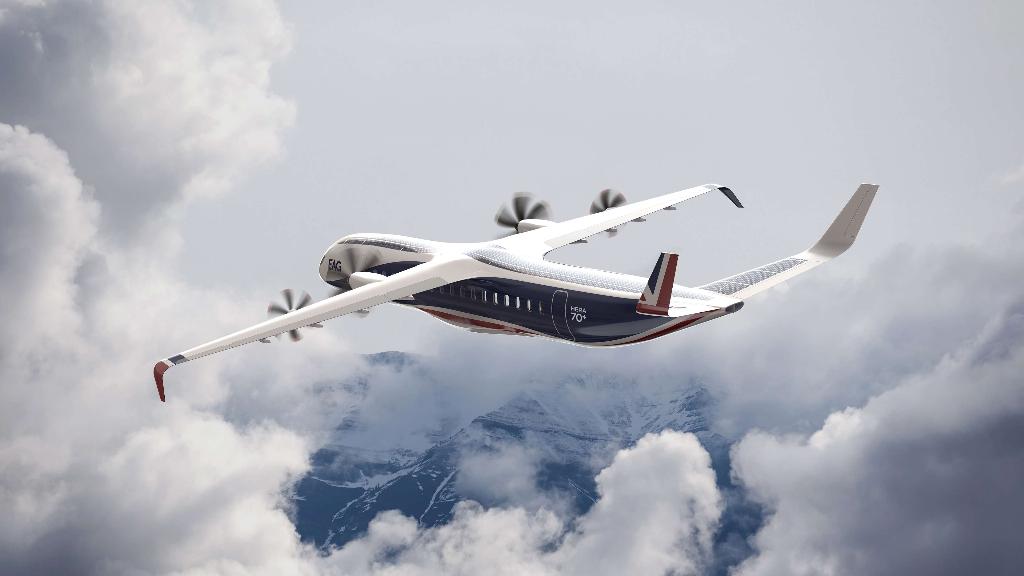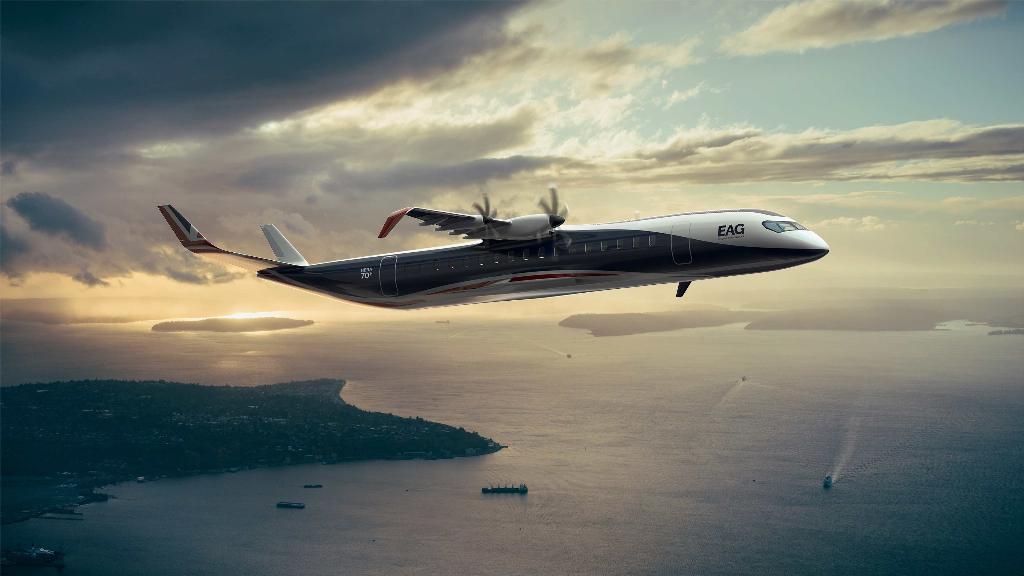Visualise the future

Realise Product Design’s managing director and founder, Andrew Redman reveals how the company is helping the Electric Aviation Group visualise the future of sustainable aviation and the introduction of its hybrid-electric regional aircraft concept.
Physical product design is a craft that brings together human needs with the physical world around us. To develop successful products, good designers do not just make things look pretty. Instead, they use their creative expertise with a deep understanding of technology, people, and commerce, to deliver effective real-world solutions.

Realise Design is a Bristol-based agency, with a long history of designing and engineering physical products. The company has a team of talented product designers with an added passion and strong insight into the urgent need for sustainable development.
Like many others, Realise sees Covid-19 as an opportunity to reset and mobilise meaningful change towards a ‘green’ recovery. This is particularly relevant in the aviation industry, whose foundations have been significantly rocked and are under the pressure of UK legislation to decarbonise flight by 2050. Realise were therefore delighted to be approached by the Electric Aviation Group (EAG), a start-up developing the first viable 70+ seat Hybrid Electric Regional Aircraft - or ‘HERA’ - based on their impressive portfolio of innovative technologies. Coincidentally, Hera was also a Greek goddess of the skies.
Electrification for net-zero flight raises the question of whether aviation will parallel the automotive industry and if the incumbent goliaths will be able to lead a change?
As Realise Product Design’s managing director and founder, Andrew Redman explains: “Clearly an electric airliner is a far bigger commercial challenge than an electric vehicle, but Realise’s experience with game changing clients leads us to believe it will take an agile newcomer, a ‘Tesla of aviation’, with a clear long-term vision and nothing to lose, to force the necessary disruption.”
Net-zero challenge
As with all their clients, Realise had to quickly get to grips with the challenges and opportunities EAG had in their industry. They were shown the ‘green shoots’ of new small electric planes already taking flight, but there are limitations to battery technology. Without as-yet-unknown radical battery chemistry, predicted improvements would never achieve more than short-haul distances.
The glitterati of the aviation industry are therefore pivoting to hydrogen as the golden child for the future. But Hydrogen fuel technology is not yet advanced enough, and the vast infrastructure required does not exist, meaning hydrogen fuelled mass-commercial flight is at least 20 years away. The problem EAG wanted to solve was: what can be done now to get us there?

HERA is being developed in that context, with the intention to be commercially competitive and not just a technology demonstrator. For example, the company’s pragmatic choice to combine conventional and whisper quiet electric propulsion would enable it to access to more airfields with increased utilisation, especially at night where it could be quickly repurposed for cargo.
Launching HERA will be no small feat. EAG eventually need a cool $5 billion to deliver their aircraft in 2028 as planned. To gain buy-in from investors for the next round of development, they needed to showcase their technologies and expertise within a concept aircraft.
Somewhat unusually, EAG decided to look outside the aerospace industry for fresh thinking and a recommendation led them to approach Realise, who seeing the clear value and impact of this solution, were keen to support EAG in bringing their concept to life.
An object of value
Understanding engineering systems and zooming in and out of detail to develop an overall object of value is what product designers do. But Realise’s team also includes mechanical engineers and an understanding of aerodynamics from their experience in yacht design. This expertise enabled them to quickly grasp the aircraft design expectations and constraints provided by EAG to skilfully model a range of aerodynamically feasible design visualisations to suit the company’s ambition and vision. As EAG’s CEO, Kamran Iqbal, confirms: “Being product designers, the technical capabilities at Realise extended far beyond that of a typical visualisation company. They’ve been a great team to work with.”

Creating the aircraft shape required balancing technical feasibility with captivating aesthetics. The basic wing geometry took a little inspiration from the legendary Spitfire, which has one of the prettiest wing-to-fuselage transitions. The designers adapted the fuselage shape, creating a slightly flattened top to blend the wing root and increase body lift, also creating a more useful surface for the lightweight organic photovoltaic (OPV) panels. Together with EAG, they devised the unique ‘U’ tail design, partly inspired by bird geometry, to reduce drag. And literally capping it off, the nose was an appropriate area to pay homage to the de Havilland Comet – a beautiful British design, also ahead of its time.
Once the aircraft concept was agreed, the last challenge was to convey this as both inspirational and believable imagery. As any good photographer will tell you, anyone can snap a quick likeness, but there is skill and craft in communicating emotions and ideas.
At this point, Redman recalls: “By this stage we’d fallen for HERA and wanted to dress her up and show her off to the world, performing at her best in the beauty of dramatic skies.”
So, the team did exactly that, dressing HERA in a range of custom EAG livery designed to show off the plane’s shape with a classier, more contemporary look. Assessing the critical aircraft features to be communicated, Realise storyboarded the views and selected the best background images, individually polishing each final image to convey the sense of real flight.
Pictures worth investing in
EAG’s hybrid-electric regional aircraft will serve as a leading example of British design, engineering and manufacturing excellence. As Iqbal explains: “This is the next paradigm shift in the aviation sector. It is the beginning of a very challenging but rewarding journey. No single organisation will succeed working in silos; hence we also formed the ‘JetZero Consortium’ to turn this vision into a reality.”
EAG’s product will enter a ready-made market of 3,000 aircraft that would need replacing, equating to $80bn if delivered within the decade. It could create more than 25,000 jobs and unlock further billion-dollar investments for the aerospace industry.
EAG unveiled HERA to coincide with the opening of this year’s virtual Farnborough International Airshow. The inspiring, realistic images of HERA had exactly the effect EAG intended, helping people see and engage with the full vision behind their HERA aircraft programme, which received an overwhelming response from the global aerospace sector, governments, investors and international media.













